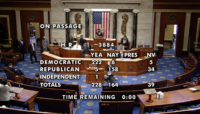Cannabis presents a plethora of challenges for entrepreneurs not seen in more traditional industries. Akin to the dot-com boom of the early 2000s, the cannabis industry has seen an astonishing flurry of business over the past decade. Within this dynamic landscape, new cannabis companies come and go on a near-daily basis.
To capitalize on novel markets’ potential, hopeful entrepreneurs from all walks of life have “jumped headfirst” into the cannabis space. This new breed of entrepreneurs must not only be smart, but they must also be challenging. Yet, as the cannabis industry evolves under the forces of legalization and innovation, our understanding of what defines cannabis entrepreneurs continues to change.
Cannabis businesses are shaped by the regulations, challenges and opportunities of specific market niches. As such, cannabis entrepreneurs have evolved with the environments in which they do business.
California & Proposition 215
California paved the way for the industry of today by legalizing medical cannabis in 1995. Since the passage of historic Proposition 215, cannabis has continued to gain momentum across the globe. This progress has happened through the visions and hard work of small business owners.
 The early days of legal cannabis in California are now criticized for their lack of regulation. During the late 1990s and early 2000s, all you needed to start a cultivation business in California was a place to grow a garden. While early dispensaries did need local business licenses, they could legally purchase and sell untested products from unlicensed growers.
The early days of legal cannabis in California are now criticized for their lack of regulation. During the late 1990s and early 2000s, all you needed to start a cultivation business in California was a place to grow a garden. While early dispensaries did need local business licenses, they could legally purchase and sell untested products from unlicensed growers.
The genealogy of the modern cannabis industry can be traced directly back to the days of California’s Prop 215. During this era, the first cannabis dispensaries were founded – this model has since been replicated thousands of times. Also, the Prop 215 model gave rise to America’s first legal, commercial cannabis farms.
Cannabis entrepreneurs in California’s medical space focused primarily on developing the blueprints for a brand-new industry. To this end, they did not have the time or luxury to finetune the businesses for such things as operational efficiency and brand awareness. Even more, these people did not have to deal with such complexities as employee screening, product testing and seed-to-sale tracking.
Medical Cannabis Entrepreneurs
New medical markets stand in stark contrast to those seen in the early days of California. To this end, today’s medical markets operate within a web of stringent government regulations. For entrepreneurs, these rules set forth major emphases on both compliance and technology.
![]() The Pennsylvania medical cannabis industry provides an excellent platform for understanding how the regulatory system of a market shapes entrepreneurial paths. For instance, medical cannabis cards are only issued to patients that meet the minimum criteria of 23 qualifying conditions, including severe conditions like aids, cancer and epilepsy. Beyond that, cannabis dispensaries in Pennsylvania must meet a slew of challenging criteria to operate and pay large sums of money in licensing fees.
The Pennsylvania medical cannabis industry provides an excellent platform for understanding how the regulatory system of a market shapes entrepreneurial paths. For instance, medical cannabis cards are only issued to patients that meet the minimum criteria of 23 qualifying conditions, including severe conditions like aids, cancer and epilepsy. Beyond that, cannabis dispensaries in Pennsylvania must meet a slew of challenging criteria to operate and pay large sums of money in licensing fees.
To handle the regulatory requirements in places like Pennsylvania and remain profitable, medical cannabis entrepreneurs are incredibly dependent on technology. To this end, dispensaries utilize point-of-sale (POS) and seed-to-sale software to track inventory and stay compliant carefully. Even more, they use state-of-the-art security systems to safeguard their operations.
Cannabis entrepreneurs in medical markets must be able to run compliant operations and support their businesses with requisite technology. These elements stand in stark contradiction to the “wild west” mentality that pervaded the early industry. As such, it’s safe to assume that the rules of today’s markets force entrepreneurs to be more professional than in the days of CA Prop 215.
Adult-Use Cannabis Entrepreneurs
The most considerable difference between medical and adult-use cannabis companies has to do with their available customer base. Importantly, adult-use cannabis companies are only bound by minimum age requirements and state borders. Furthermore, limited restrictions on licensing create highly competitive markets that require sophisticated sales and marketing operations.
As there are no limits on potential customers, and limited regulations on license counts, business opportunities in adult-use markets are primarily directed by supply and demand rules. Because competition is the driving force in adult-use markets, entrepreneurs in this vertical have a good deal in common with peers outside the cannabis industry.
 Perhaps the most defining characteristic of adult-use entrepreneurs is an emphasis on branding and marketing. As adult-use markets mature in places like Colorado, a phenomenon known as “brand concentration” occurs when a few companies come to dominate a majority of the market. As smaller companies fight for market share, they must develop professional brands that appeal to a broad customer base.
Perhaps the most defining characteristic of adult-use entrepreneurs is an emphasis on branding and marketing. As adult-use markets mature in places like Colorado, a phenomenon known as “brand concentration” occurs when a few companies come to dominate a majority of the market. As smaller companies fight for market share, they must develop professional brands that appeal to a broad customer base.
Cannabis entrepreneurs in adult-use markets must master the skills required in medical cannabis while also expanding their knowledge base in modern business dealings. Of these, the development of professional brands is one of the most defining characteristics of adult-use entrepreneurs.
It’s astonishing to see how much the cannabis industry has grown and matured looking back just a few short years. As business opportunities come about with new legalization efforts, entrepreneurs quickly rise to take advantage of untapped markets. As the cannabis business continues to evolve with the times, entrepreneurs must pivot to stay compliant, relevant and successful.
While the early Prop 215 market in California barely resembles today’s industry, it’s important to remember where we came from. Namely, our understanding of the contemporary cannabis business results from everyone who came before us. As the industry progresses, we will continue to complement established best practices with the requisite innovations that come with new opportunities.









